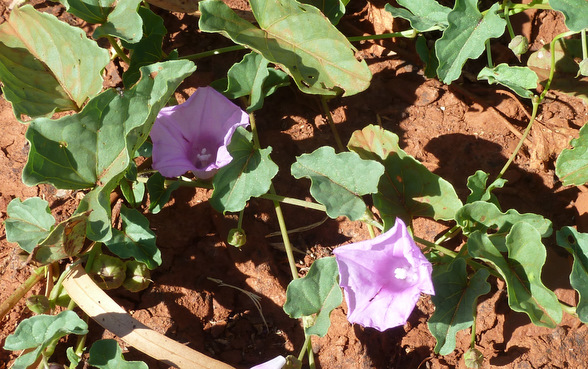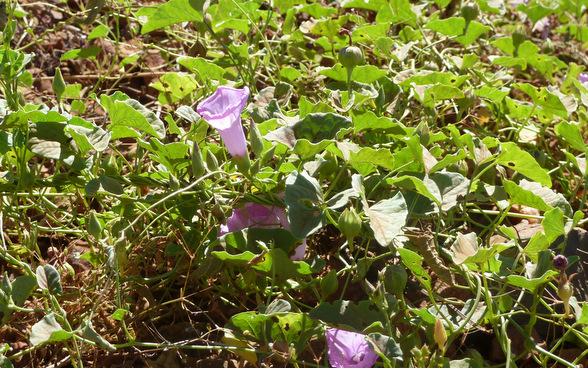Native Morning-glory
Its genus name Ipomoea is from the Greek 'ips' or 'ipos', a worm that eats horn and wood, and probably refers to the long slender stems. Also known as Poison Morning Glory referring to its toxicity and the morning opening of the showy flowers, followed by their closing in the afternoon.
Sprawling perennial ground cover, up to 3 m wide, with twining stems.
Leaves
Heart shaped dark green leaves are up to 4 cm long and 2 - 3 cm wide.
Flowers
Lilac or pink flowers have a darker throat and are shaped like a funnel or trumpet. Flowers are up to 4 cm long and 5 cm in diameter.
Field Guide
Improve your identification skills. Download your Native Morning-glory field guide here!

What to Observe
-
First fully open single flower
-
Full flowering (record all days)
-
End of flowering (when 95% of the flowers have faded)
-
Not flowering

When and Where
When To Look
- March to December
Where To Look
- Extends from Carnarvon in Western Australia east to the desert and north-east to the Kimberley and Northern Territory
- Look in alluvial loam or gravelly soils in shrub and steppe country
- Also look along river courses

What Else?
Toxic to stock and has caused heavy sheep losses in Western Australia.
Similar Species
Related to the Bush Potato (Ipomoea costata), a twining shrub up to about 2 m tall which grows in rocky outcrops near Dampier and further inland.

